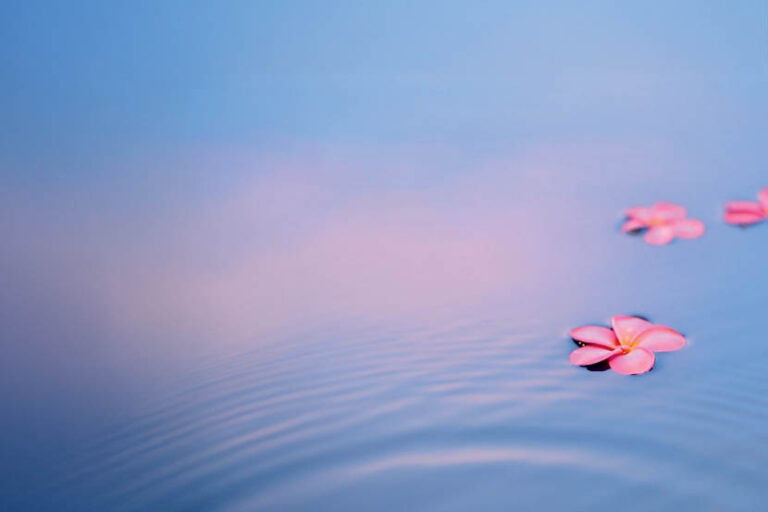
Swimming with manta rays in the Maldives is one of the world’s great wildlife experiences.
Out of the big blue beyond, a large, dark shape slowly comes into focus, flying silently below the waves, heading in my direction. I hold my position, floating face down on the surface, peering into the sun-dappled depths through my diving mask, breathing as calmly as I can, quietening my beating heart and spiritually beckoning the ocean marvel coming my way. As it gets closer, a cavernous mouth comes into play, while broad black wings swoosh my new aquatic friend along, above the sea floor. Its size is immense, magnified even more through the glass of my mask, but I stay as inactive as driftwood, moving softly with the ocean’s ebb and flow. Now just a few metres away, it dives down and soars directly beneath me, as I bob above, starfished and starstruck.
Island idyll

One week in Raa Atoll
For one blissful week, the Raa Atoll in the Indian Ocean archipelago is my playground, too, as I learn how one of the Maldives’ legendary luxurious resorts is playing a huge role in protecting the island nation’s precious population of manta rays. As I fly in on a 15-seater seaplane from the country’s capital and main international entry point, Malé, the sky and sea are brushed with an astounding palette of blues – from the cobalt of the deeper ocean trenches to the aqua and turquoise rings of the shallower lagoons, with the piercing azure above, umbrella-ing it all. Occasional yachts sail below, white horses riding rhythmically across the waves, while speedboats unzip foamy wakes and trails, whisking visitors to long-dreamed-of horizons.
Fringed by white sand and circled by coral reefs, the InterContinental Maldives Maamunagau Resort is an idyllic setting, blanketed in lush palms, with hints of discreet villas and residences just peeking through. A nautically painted lighthouse and restaurant with 360-degree views stands at one end, solar-panelled rooftops glinting in the sun, and beachy wooden boardwalks lead to the tranquil AVI Spa and stilted deluxe water bungalows, which fan out over the lazily lapping sea. So far, so dreamy. But below the waves, the lagoon that surrounds Maamunagau is home to marvels of the marine kind. With crystal-clear, warm water, the island’s house reef abounds with myriad fish, turtles, dolphins, and harmless lemon and blacktip reef sharks. Guests can kayak, paddleboard, wakeboard, sail, or waterski above this vibrant world, but I’m here to explore what lies beneath and to swim and snorkel with one of the ocean’s most iconic species.
Rays of light

Size, weight, and feeding habits
Often described as “megafauna” due to their imposing size, reef manta rays can grow up to 4.5 metres across, from wing tip to wing tip, and weigh up to 700 kilograms. Yet they are dwarfed by their giant oceanic or pelagic manta ray cousins, which are seen less often, as they travel in deeper waters across the planet’s vast expanses of tropical and subtropical seas.
The largest ray species in the world, oceanic mantas can reach seven metres in width and push the scales to 2,000 kilograms: a feat achieved incredibly through feasting on some of the tiniest creatures in the ocean, zooplankton, also the favourite snack of the reef mantas that come to dine in Maamunagau’s lagoon. Filtering the microscopic organisms from the water through branchial gill filaments, known as gill plates, mantas take their name from the Spanish word for “blanket” or “cloak” and, with their fist-sized brain, have the largest brain-to-body ratio of any cold-blooded fish species.
Collectively known as mobulids, they live for 40 to 50 years in the wild, but reef mantas are currently listed as vulnerable, while oceanic manta rays are classified as endangered by the International Union for Conservation of Nature (IUCN), moving them one step closer towards extinction.While large groups of mantas could once be seen congregating across their range, now, just a few regions remain where this phenomenon can be witnessed – overfishing, pollution, habitat loss, and climate change having taken their toll on our precious marine ecosystems. One of those places is Hanifaru Bay in Baa Atoll, a short boat ride from Maamunagau, and one of the Maldives’ protected UNESCO Biosphere Reserves. With 250 species of coral and more than 1,000 species of fish, the Maldives is a hotspot for marine biodiversity. It’s here you’ll find the largest aggregation of mantas in the world, when hundreds of the rays arrive to feed on the plankton in the bay between May and November each year, alongside one of the ocean’s other megafauna megastars, the whale shark.
Conservation measures
Unsurprisingly, the Maldives was chosen to be the location for a long-term scientific research study of manta rays, and in 2005, marine biologist Guy Stevens set up the Maldivian Manta Ray Project (MMRP), which has evolved to be one of the largest manta conservation studies in the world. Building on the project’s success, the Manta Trust was founded in 2011, and Guy completed his PhD on reef mantas at the end of 2016. BA042_098-101 Giants of the ocean.indd 100 4/12/2023 4:32:10 PM 101
‘In 2014, the Manta Trust and its collaborators launched the Global Mobulid Conservation Program to help protect the world’s mantas,’ Jess Haines, Manta Trust’s project manager in Raa Atoll, tells me. Based at the resort’s PADI 5-Star Ocean Dive Centre, Jess has been working here since 2019. Along with research interns Tiffany Bond and Anna Knochel, she heads out twice a day to study the reef mantas. Spending hours in the water, they measure, photograph, and identify them from their unique spotted markings and register their findings with the broader MMRP teams.
‘The Manta Trust partnership with InterContinental here began in 2019 and involves scientific research, educational programs with local schools and universities, and essential community projects,’ continues Jess, as we prepare to head out after an epic breakfast of traditional Maldivian pumpkin curry, roti, rice, sambal, and tropical fruits. ‘From our research, supported and part-funded by the InterContinental and the resort’s guests, we’ve discovered that Maamunagau’s lagoon is an important nursery site for manta rays. Juvenile manta rays are spending lots of their time here, but we see most from December to April, with January being the peak season, due to the movement of the plankton, which is dependent on the wind and ocean currents. Wherever the zooplankton goes, the mantas will follow.’
Need for protection
In the Maldives, male reef manta rays reach sexual maturity at the relatively late age of 11 and females at 15, giving birth to just one pup every five to seven years depending on food availability, so protection for mantas is vital if their populations are to remain stable or grow. Along with pressures on ocean habitats from harmful fishing and trawling practices, rising CO2 levels and plastic pollution, mantas are often sadly caught as bycatch by fishermen targeting other species, like tuna.
Recent decades have seen a trade in manta ray and devil ray gill plates, known as pengyusai, also impacting the survival of these creatures, which have been roaming our oceans for an estimated five million years. Killing manta and devil rays to sell their gill plates for use as Asian dried seafood and in traditional Asian medicine has taken a devastating toll, with China, the Philippines, Indonesia, Mozambique, Madagascar, India, Pakistan, Sri Lanka, Brazil, Peru, and Tanzania all involved in the commercial trade. As surface feeders, the mantas are visible from fishing boats, and with no real form of defence other than swimming away – they have no venomous spines like stingrays, or teeth like sharks – these gentle filter feeders are an easy target. Harpooned or captured in nets, their gill plates are sold as bogus remedies for everything from acne to cancer.
Vendors claim that just as mobulids use gill plates to filter plankton from the water, they can aid in detoxification and purification by filtering disease and toxins from the body. Despite no scientific evidence to support the claims, mantas are still being fished. Thankfully, a number countries, including Indonesia, Peru, the Philippines, Mexico, Australia, Brazil, Malta and the Maldives have laws in place to protect these vulnerable species, however illegal catches are still an ongoing concern.
Reef mantas are currently listed as vulnerable, while oceanic manta rays are classified as endangered, moving them one step closer towards extinction.
‘Abolishing harmful fishing practices, bringing in tougher penalties for illegal fishing, improving ocean habitats, and protecting the manta rays’ feeding, breeding, and nursery sites is essential if we’re going to see these incredible animals survive and thrive,’ says Jess. ‘We’re hoping to have the lagoon designated as a Marine Protected Area, and we’re working hard to achieve that for the mantas. We owe it to them to ensure the species is around for many, many years to come.’
Mysterious and magical, three more reef mantas swoop gracefully by as I float around above the lagoon’s plankton superhighway, their distinctive cephalic fins, or horns, extended to funnel their barely visible food, while inquisitive eyes peer into mine, knowing and completely aware. As they dance away into the deep, with sideward synchronised swirls, I wonder if they see a bright future, as Jess does, in the blue.


















